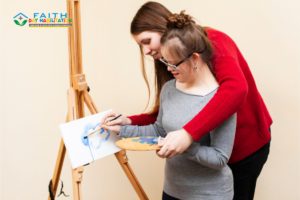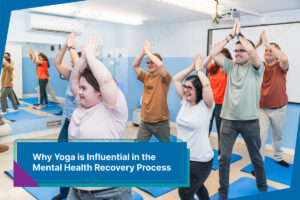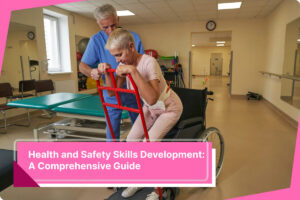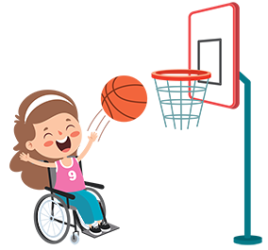People practice yoga as part of their workout to ensure overall fitness. It has many advantages including physical health, relaxation of mind, and flexibility.
Thinking about how yoga can meet certain needs makes it more applicable. This article is all about how yoga works with people who have special needs and how it may improve their health and can be used to treat people who have special needs.
Fitness Understanding of Special Needs
Before heading for how yoga and physical fitness could be beneficial to people with special needs, it is vital to know the different forms of yoga. The individuals with special needs may have some pain in their bodies, mind, feelings, or growth. Among these are ASD, Down’s syndrome, cerebral palsy and problems with visual information perception.
Thus, it is crucial for each person to have an individual plan considering their strengths and weaknesses. The special needs people are not able to follow the regular workout rules. Yoga transforms into a versatile and whole-some technique of self-improvement.
Yoga for Adults with Special Needs
Yoga is centered on being aware, regulating your breathing, and doing simple poses. Hence, everyone regardless of their abilities can use it. Contrary to rigid workout routines, yoga demonstrates to people that they can be challenged and grow without any judgment.
There are numerous ways through which people with special needs can derive benefits from yoga. Balance of senses, muscles and the mind is achieved through regular workouts. Through meditation, people with special needs can think more clearly and they can become more self-aware about the benefits of yoga for adults with special needs.
Health Benefits of Yoga for People with Special Needs
For people with special needs, yoga is good for their health and exercise in a number of ways. Take a closer look at some of these benefits of yoga for physical health:
- A lot of people with special needs have trouble moving their joints. The gentle movements and stretching in yoga slowly make you more flexible and able to move in more ways. Being flexible lowers stress on muscles, boosts balance, and makes it easier to move around.
- Yoga poses, or asanas, work a lot of muscle groups without putting too much stress on the body. People with cerebral palsy and muscle dystrophy need to do strength training to stay safe and independent.
- Balance and rhythm are important for daily life and being able to do things on your own. Students with special needs may be able to improve their proprioception and spatial awareness by doing tree position and fighter III. This could make them safer in their surroundings.
- People who have arthritis or fibromyalgia often have pain that doesn’t go away. By calming you, easing muscle strain, and increasing blood flow, yoga can help ease pain. Through the mind-body link, yoga also helps people deal with pain.
- Pranayama, or controlled breathing, is an important part of yoga and may be good for your lungs. Deep breathing makes your lungs bigger, your blood more oxygenated, and you feel calmer. Pranayama may help people with asthma and COPD breathe better and ease their symptoms.
Yoga Therapy for People with Special Needs
For people with special needs, yoga training is very important. Yoga therapy is different from regular yoga lessons because it is tailored to each person’s needs, skills, and goals. Certified yoga therapists or teachers who have been trained in adaptive yoga work with clients to make personalized practices that help them deal with problems and feel better.
The principles of special needs yoga therapy are:
- Anyone can do yoga treatment because it can be changed to fit their needs. Different amounts of movement can be supported by blocks, belts, and bolsters. For safety and comfort, changes are made to the pose and the order.
- One of the main ideas in yoga therapy is to be aware of the present moment and notice your feelings without judging them. Guided meditation and body scanning help people become more self-aware and emotionally strong, which makes it easier for them to deal with worry and hard times.
- Self-healing and self-change are important parts of yoga treatment. People can take charge of their health with yoga treatment. Regular practice and positive feedback may improve the physical, social, and mental health of people with special needs.
- Yoga treatment doesn’t just treat symptoms; it treats the whole person, knowing that the body, mind, and spirit are all connected. Through physical poses, breath work, meditation, and rest, yoga therapy supports overall health and balance.
Conclusion
To be fit and healthy, you need to include everyone. Yoga’s adaptability, awareness, and all-around approach to physical and mental health are good for people with special needs. Accessibility, awareness, freedom, and total blending make yoga therapy a personalized path to health, self-discovery, and inner peace.
Let’s value yoga’s ability to help people of all abilities grow as we work to make exercise more open and diverse. Yoga for people with special needs shows how strong the human spirit is and how much it can grow, heal, and change.













